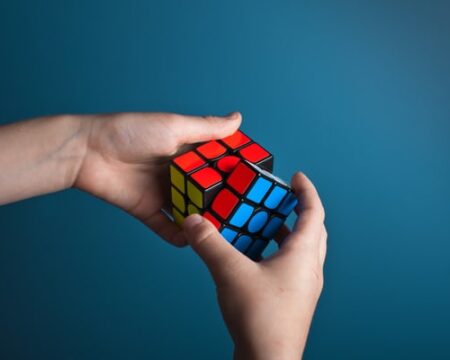

FSRA’s (Mostly Reasonable) Limitations on Commuted Value Transfers

Since 2009, defined benefit pension plan administrators in Ontario have had to regularly monitor the transfer ratio (“TR”) of their pension plan and are required to seek approval from FSRA prior to making a commuted value (“CV”) transfer if the administrator knows or ought to know that that the TR has dropped by 10% or more since the last valuation and is now below 0.90.
Enter Global Pandemic
With the recent market turmoil as a result of COVID-19, many pension plans suffered losses on their investments during the first quarter, while at the same time interest rates have hit new lows, resulting in significant decreases in TRs in some cases. Across our clients, about a third had seen their TR decrease by more than 10% as at March 31, 2020; however, given the market rebound over the past couple of months, only about a quarter are now down more than 10%.
In addition, due to the nature of the current crisis, many plan sponsors may be in a perilous financial situation themselves; and let’s not forget that the security of the pension promises depends not only on the funds in the plan but also the solvency of the plan sponsor and its ability to make additional contributions if/when they are required. On top of that, some employers may be experiencing higher employee turnover than normal, which will increase the rate of CV payments leaving the pension plan. All of this may combine to cause a so-called run on the bank – hence the need to potentially limit CV transfers in times of crisis.
Pension Regulators React
On May 22, 2020, FSRA published updated guidance on reviewing and approving requests to continue paying out CVs when the TR has dropped by 10% or more.
Some people have complained that FSRA took too long to issue their guidance as compared to other regulators like OSFI who ordered a full freeze on CV transfers on March 27, 2020 (OSFI has since relaxed their total ban and provided the ability to obtain their consent – sometimes automatic – for CV transfers in certain situations). However, keep in mind that the legislation in Ontario is unique in that the know or ought to know rule provides for an automatic freeze on CV transfers, so FSRA didn’t need to act quickly in that regard. FSRA should also receive credit for conducting extensive consultations with various stakeholders as they revised their guidance on this topic.
Revised Approval Process
FSRA’s updated guidance outlines three options for plan administrators who owe CVs to plan members when the TR has dropped by 10% or more:
- No Approval Requested – this option is available to plan administrators who want to take a wait-and-see approach prior to paying out any CVs. Plan administrators may choose to take this option after considering its fiduciary obligations to all plan members if there are serious liquidity issues with the pension plan’s investments, concerns with the plan sponsor’s financial condition, only a small number of CVs owing, etc. If a plan administrator elects this option, it must still inform FSRA, communicate with all plan members and outline the steps and conditions to return to normal operations. It is likely that additional actuarial reporting will be requested by FSRA before CV transfers may resume.
- Expedited Process – this option is available to plan administrators who submit a Form 10 to declare the lower TR and propose to pay out CVs in accordance with one of the following:
A. pay out the full CV after making a top-up contribution of the full transfer deficiency; or
B. if the updated TR is at least 0.85, pay out the full CV as long as the aggregate of all transfer deficiencies since the last full valuation does not exceed 5% of the plan’s assets; or
C. if the updated TR is less than 0.85, pay out a portion of the CV at the updated TR, with the remainder paid out within 5 years. - In-Depth Process – pension plans that have an updated TR less than 0.85 but wish to continue paying out full CVs without making top-up contributions may apply to FSRA for special approval. So that FSRA may evaluate the situation and potentially attach conditions to its approval, plan administrators will need to support their Form 10 application with additional details such as the following:
- identification of any liquidity concerns (or a confirmation that there are none)
- details on the expected number and size of the CVs
- the size of the CVs as compared to the assets and liabilities of the plan
- the magnitude of the drop in TR
- the plan’s investment strategy and how it may react to future market volatility
- the financial strength of the plan sponsor
After a Form 10 is submitted, FSRA aims to respond with 5 business days under the expedited process and within 15-20 business days under the in-depth process.
Given the additional scrutiny that a plan administrator will attract from FSRA if they elect Option 1, not to mention the potential wrath and confusion from their plan members, I suspect that very few pension plans will want to go down that road. I believe that Option 2B will be the preferred choice for most plan administrators, and my understanding is that FSRA will likely grant approvals under this option even with a TR less than 0.85 as long as there are no red flags during the in-depth review.
What Happens Next?
If a pension plan doesn’t qualify under Option 2B, it can resume making full CV payments without top-up contributions if it files either a full funding valuation report or a statement from the plan’s actuary confirming a TR of at least 0.90.
However, if the TR drops by another 5% or more, CV payouts must immediately cease and the whole approval process must repeat again. I’m not exactly sure where this 5% threshold came from, because the legislation and regulations clearly talk about a 10% drop. Given the current volatility in the stock and bond markets, it’s not hard to generate a 5% drop in the TR in a matter of days. For plans that are nowhere near causing a ‘run on the bank’ (i.e. strong plan sponsors, low turnover, small CVs, no liquidity concerns, etc.), the 5% threshold makes no sense to me and only adds administrative burden and costs to plan administrators who are already struggling through this COVID-19 crisis.
It’s important to remember that the 10% (or 5%) drop only matters when a CV is payable. If no CV is payable (and note that you have 60 days after receiving the member’s paperwork to pay the CV) then an administrator can hope that the TR recovers before a CV becomes payable. Also note that payments for already existing transfer deficiencies prior to the most recent drop of 10%, ‘small amounts’, and reciprocal transfers do not trigger the approval process.
FSRA should be commended for a fairly reasonable and balanced update to their guidance around the approval for commuted value transfers when the funded status of a DB pension plan drops significantly in a short period of time. As with most policymakers during this time of COVID-19, FSRA has reserved the right to make adjustments at any time and specifically noted that this guidance will be reviewed no later than December 31, 2020. I recommend that upon reflection they remove the unnecessary complications around the subsequent 5% drop in the transfer ratio.
A special note for all of ASI’s clients where we prepare the payment authorizations for CVs: rest assured that we monitor your pension plan’s TRs and we will contact any client that needs to seek approval from FSRA in order to guide you through the process.


